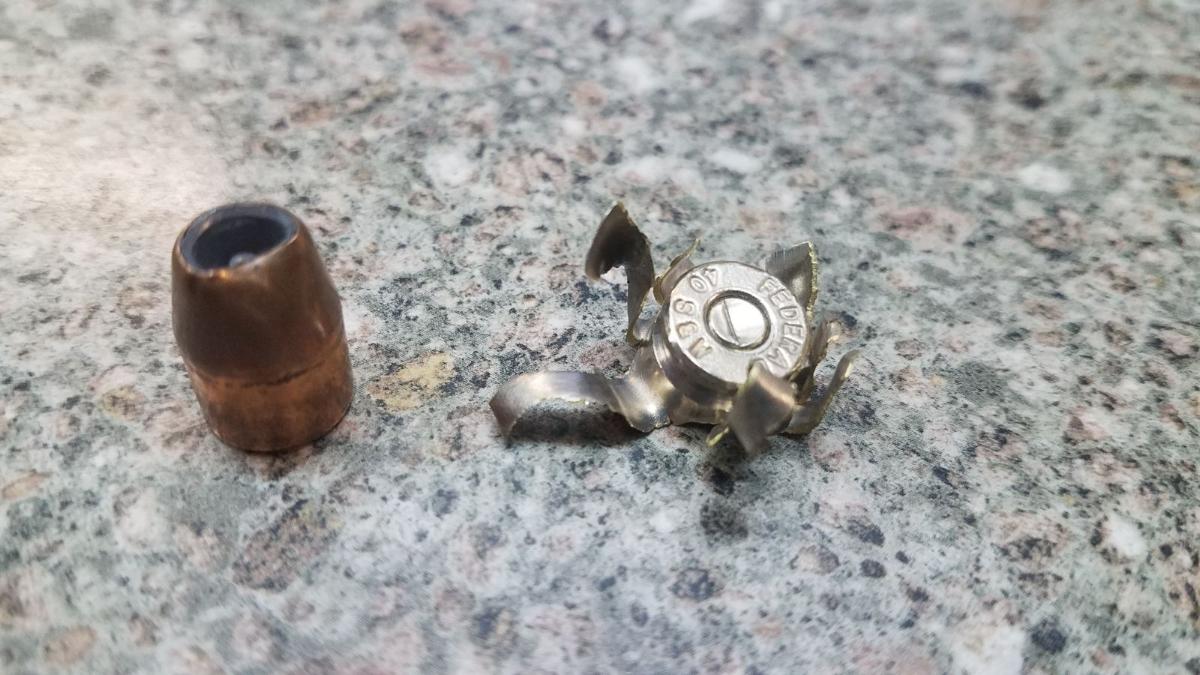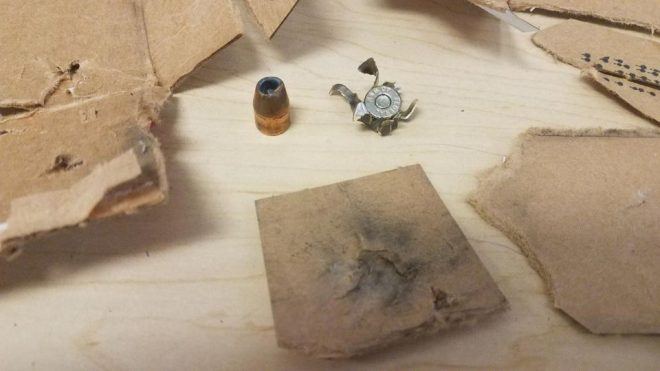For those that have been wondering about the potential dangers of dropping live ammunition, we have a well documented example for you. The Family Shooting Academy had a recent incident in which a customer dropped a box of ammo. Upon hitting the floor, there was a loud bang and the box flew apart. Despite several people standing nearby, no one was injured.
Since the cartridge was not contained within the firearm’s chamber, the explosion targets the weaker, lighter casing. Typically, since the bullet is the heaviest component of the cartridge it doesn’t go far. In this incident, the casing ended up looking more like an expanded hollow point than the bullet. The owner of the shop explained that the customer had several loose rounds of ammo inside the factory ammo box, however, it was not a new factory box and there was no plastic sleeve inside the box. In the photo below, we can see the indentation made on the exploded cartridge. It appears that the rim of another cartridge struck the primer of the one that detonated.

The video below was posted on the Family Shooting Academy’s YouTube channel. The video was caught by surveillance footage and shows the event unfold in just a few seconds. The customer had grabbed his gun case and ammo off of a table when the box slipped out of his hand. The pesky thing we call gravity (which is usually a good thing), assisted the falling live ammunition to find its unintended target. All joking aside, the video clearly shows the customer felt horrible about the accident and none of my light-hearted tones should be taken as making fun of the customer.
The store’s owner said that he’s seen a LOT of dropped boxes of ammo and has never seen this happen. Thanks to the Family Shooting Academy for letting us share this rare but cautionary tale with great documentation. Have any of you had a similar experience with dropping live ammunition? Stay safe out there and protect those primers!
 Your Privacy Choices
Your Privacy Choices
